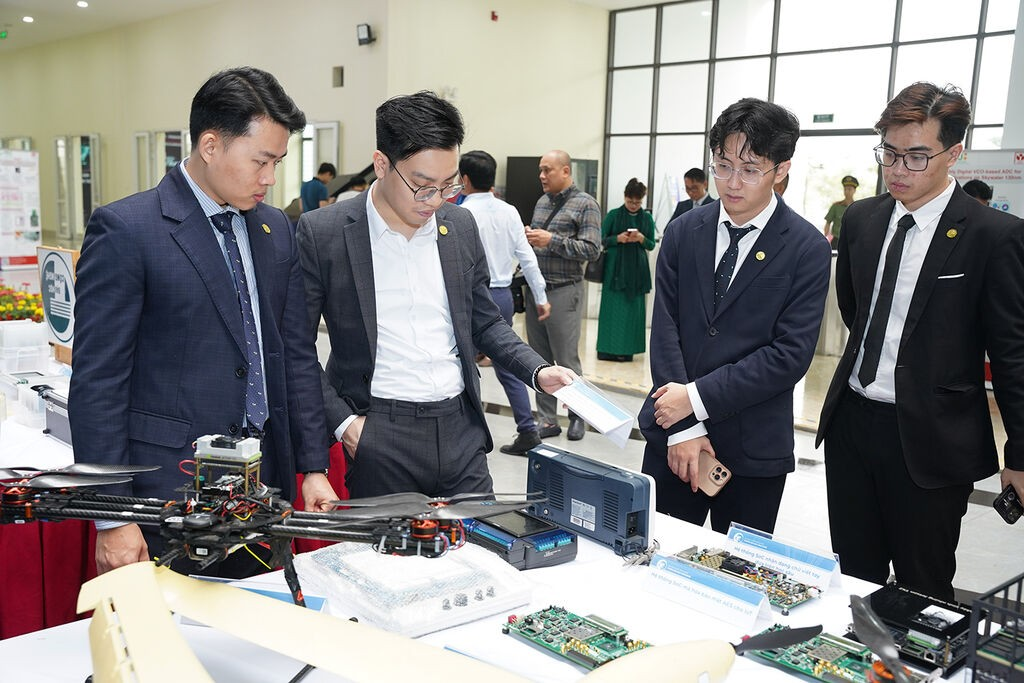Motivating semiconductor professionals to work in Vietnam requires more than high salaries - it also demands a livable environment and strong development ecosystem.

At the “Developing Human Resources for the Semiconductor Industry” conference on April 24, Prime Minister Pham Minh Chinh emphasized that workforce training is one of five pillars essential to advancing Vietnam’s semiconductor sector, alongside infrastructure development, regulatory improvement, resource mobilization, and ecosystem building.
However, training in Vietnam faces significant challenges and requires coordination among the "three houses": the government, educational institutions, and enterprises. The Ministry of Finance and the Vietnam Innovation Center (NIC) are acting as a bridge to connect domestic and international partners to realize the National Semiconductor Workforce Development Program by 2030, with a vision to 2050. The program aims to train at least 50,000 university-level professionals, 1,300 specialized lecturers, and establish over 20 national-level labs for training and research by 2030.
Lecturers need to breathe the industry’s air
Speaking to VietNamNet at the “Digital Twin Shaping the Future of Semiconductor Talent” event on June 12, Do Tien Thinh, NIC Deputy Director, highlighted two major training directions: enhancing lecturer capacity and offering hands-on experience for students.
Though academically qualified, lecturers often lack real-world exposure, labs, and live projects. Semiconductor training must be enterprise-driven. In many countries, professors are required to join corporate projects to bring practical knowledge into classrooms.
NIC is promoting short-term (3 to 6 months) training for lecturers, partnering with global semiconductor firms like Nvidia and Qualcomm. These programs allow lecturers to stay current and even work within multinational firms.
For students, joint training programs with foreign universities - such as 2+2 or 3+1 formats - are cost-effective solutions. These models allow students to study 2–3 years in Vietnam and 1–2 years abroad, gaining access to advanced labs, practical training, and international faculty. This improves employability, particularly in places like Taiwan (China), which boasts a strong semiconductor education system but suffers from labor shortages.
NIC is facilitating connections between Vietnamese universities and economies like the U.S., Japan, South Korea, and Taiwan to meet talent development needs.
Vietnam names 11 strategic technology groups
Prime Minister Pham Minh Chinh recently approved a list of 11 strategic technology categories and 32 strategic product groups.
Beyond training, NIC is encouraging companies like Cadence and Synopsys to donate chip design tools to schools, as individual institutional requests often face hurdles.
This strategy is being applied at the Da Nang Semiconductor and AI Center (DSAC). Director Le Hoang Phuc shared initiatives such as linking universities with companies to train future lecturers, awarding student scholarships, and offering real-world work experience.
The key to attracting semiconductor talent isn’t salary
Once talent is trained, another major hurdle is retention. According to Do Tien Thinh, professionals are motivated not only by pay or housing but also by a comprehensive ecosystem including livable environments and strong public services. He noted that some foreign experts hesitate to settle in Hanoi due to air pollution.
“Advanced nations focus on building supportive ecosystems to attract and retain talent,” he said.
Le Hoang Phuc echoed this from his experience in Da Nang’s semiconductor development. Besides tax incentives and infrastructure readiness, he emphasized the importance of lifestyle.
“Da Nang is Vietnam’s most livable city, offering a strong work-life balance. That’s a major draw for talent,” Phuc said.
Du Lam